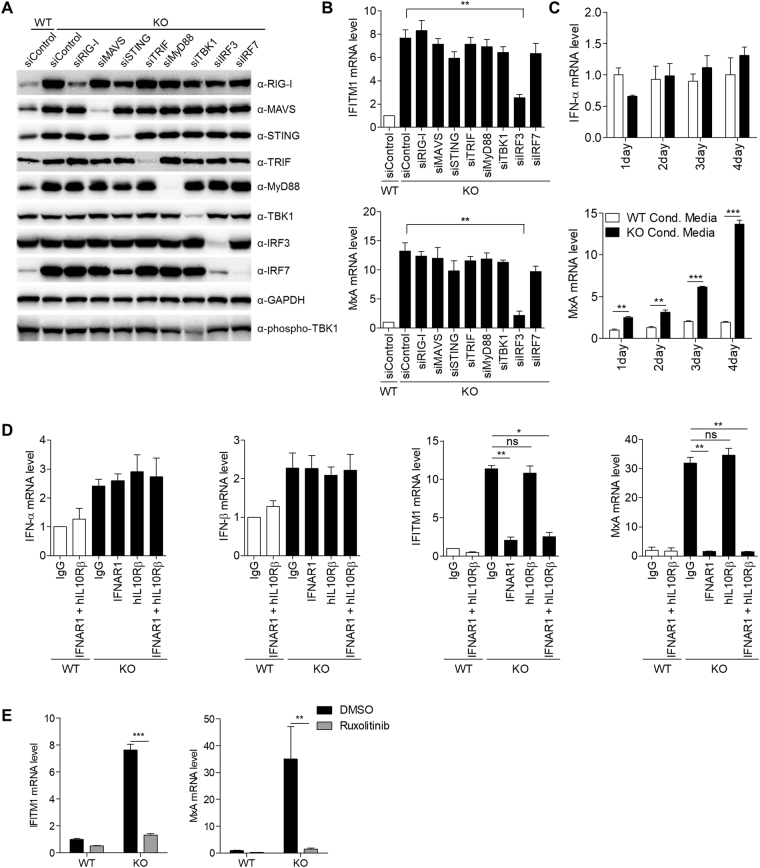Figure 4.
ISGs induction in SAMHD1-deficiency occurs through IRF3 and type I IFN receptor signaling pathway. (A,B) Wild-type and SAMHD1-deficient THP-1 cells were transfected with control siRNA or specific siRNA for the indicated genes for 72 h. Cell lysates were subjected to western blotting to analyze the protein levels. GAPDH was loaded as a control (A). The cellular mRNA was analyzed by qRT-PCR to determine the expression of IFITM1 and MxA relative to GAPDH (B). (C) qRT-PCR analysis of IFN-α and MxA in THP-1 cells incubated with conditioned media (Cond. Media.) from wild-type or SAMHD1-deficient cells for the indicated days. (D) qRT-PCR analysis of IFN-α, IFN-β, IFITM1 and MxA in wild-type and SAMHD1-deficient THP-1 cells treated with control IgG or neutralizing antibodies against type I and III IFN receptor subunits as indicated. Results were standardized to β-actin levels. (E) The measurement of IFITM1 and MxA mRNA expressions in SAMHD1-deficient cells by qRT-PCR after treating SAMHD1-deficient cells with control dimethylsulfoxide (DMSO) or 2 µM Ruxolitinib for 24 h. Data were standardized to GAPDH. In (B–E), these data represent the mean ± SEM of triplicate independent experiments. (*p ≤ 0.05, **p ≤ 0.01, ***p ≤ 0.001, ns: not significant, two-tailed Student’s t-test).

